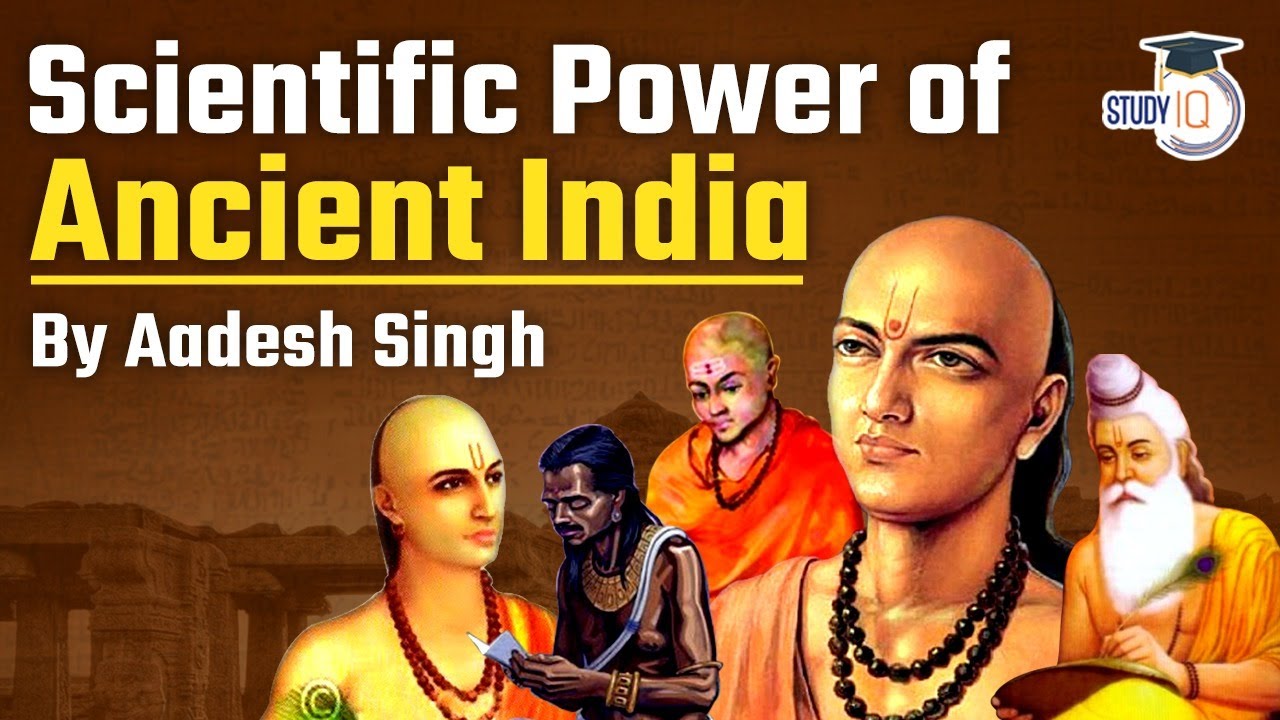IKS Lecture Ancient Mathematics 1
Summary
TLDRThis lecture introduces ancient Indian mathematics, highlighting key contributions from scholars like Aryabhata, Brahmagupta, and Bhaskara. It covers the evolution of mathematical concepts such as the decimal system, zero, negative numbers, and algebra. The lecture also explores the applications of mathematics in astronomy, trade, and architecture, with examples from the Indus Valley Civilization and Vedic mathematics. Indian mathematicians were instrumental in developing foundational mathematical principles that continue to influence modern science and technology.
Takeaways
- 😀 Ancient Indian mathematics emerged in the Indian subcontinent from 1200 BC to the 18th century, with key contributions made by scholars like Aryabhata, Brahmagupta, and Bhaskara.
- 😀 The decimal system we use today was first recorded in ancient Indian mathematics, along with early studies of negative numbers, algebra, trigonometry, and more.
- 😀 Aryabhata developed a formula to estimate the planet's orbit and accurately calculated the duration of the year as 365.25 days, using up to seven decimal places.
- 😀 Aryabhata also provided the first scientific justification for eclipses, refuting the misconception that they were caused by Rahu and Ketu.
- 😀 The Indian subcontinent's ancient cities, such as those in the Indus Valley, featured mathematical precision in urban planning, with evidence of standard measurements and geometric patterns.
- 😀 The use of fractal patterns in architecture, like those seen in the Virupaksha Temple and the Meenakshi Temple, shows the advanced understanding of geometry in ancient India.
- 😀 The Indus Valley Civilization displayed a deep knowledge of weights and measures, with bricks found in standardized proportions (4:2:1 ratio), considered optimal for bonding.
- 😀 Ancient Indian texts such as the Sulba Sutras provided guidelines for constructing altars in various geometric shapes, showcasing early examples of arithmetic and geometry.
- 😀 Aryabhata's work, including the Aryabhatiya, contributed to the fields of arithmetic, algebra, trigonometry, and astronomy, influencing later mathematicians like Brahmagupta and Bhaskara.
- 😀 The concept of zero was developed in India, symbolized by a dot, and was used in early manuscripts, playing a key role in the evolution of mathematics.
Q & A
What was the time span of the development of ancient Indian mathematics?
-Ancient Indian mathematics emerged in the Indian subcontinent from 1200 BC until the end of the 18th century, covering both the classical and early medieval periods.
Who were some of the most notable mathematicians mentioned in the lecture?
-The lecture highlights several key mathematicians such as Aryabhata, Brahmagupta, Bhaskara I, Vāṣkara, and Mahadeva for their contributions to Indian mathematics.
What are some of the mathematical concepts that originated in ancient India?
-Ancient Indian mathematics introduced the decimal system, negative numbers, algebra, arithmetic, and developed early forms of trigonometry, including modern definitions of sine and cosine.
How did Aryabhata contribute to the field of astronomy?
-Aryabhata was the first to provide a scientific explanation of eclipses and correctly estimated the length of the year (365.25 days). He also proposed that the Earth rotates on its axis.
What is the significance of the decimal system in modern mathematics?
-The decimal system, first recorded in Indian mathematics, became foundational to modern arithmetic and is the system we use today for number representation.
What role did mathematics play in ancient Indian architecture and city planning?
-Mathematics was crucial in the planning of cities and architecture, as seen in the Indus Valley Civilization’s precise measurements for weights and dimensions, as well as the use of symmetrical designs like mandalas in temples.
What was Vedic Mathematics and how is it used today?
-Vedic Mathematics consists of shortcut formulas (sutras) for performing mathematical calculations more efficiently. These techniques are applied in fields like digital signal processing and computer science.
How did Aryabhata impact the understanding of Pi?
-Aryabhata worked on the approximation of Pi and may have concluded that it is an irrational number, a significant contribution to mathematical theory.
What are some of the applications of ancient Indian mathematics in modern technology?
-Ancient Indian mathematics, particularly Vedic Mathematics, has applications in modern fields like digital image processing, video compression, speech recognition, and digital communication systems.
How did the Indus Valley Civilization incorporate mathematics into its urban planning?
-The Indus Valley Civilization displayed a high level of mathematical understanding through its geometric city layouts, standard measurements for lengths and weights, and the use of fractal patterns in temple designs.
Outlines

Esta sección está disponible solo para usuarios con suscripción. Por favor, mejora tu plan para acceder a esta parte.
Mejorar ahoraMindmap

Esta sección está disponible solo para usuarios con suscripción. Por favor, mejora tu plan para acceder a esta parte.
Mejorar ahoraKeywords

Esta sección está disponible solo para usuarios con suscripción. Por favor, mejora tu plan para acceder a esta parte.
Mejorar ahoraHighlights

Esta sección está disponible solo para usuarios con suscripción. Por favor, mejora tu plan para acceder a esta parte.
Mejorar ahoraTranscripts

Esta sección está disponible solo para usuarios con suscripción. Por favor, mejora tu plan para acceder a esta parte.
Mejorar ahoraVer Más Videos Relacionados
5.0 / 5 (0 votes)






